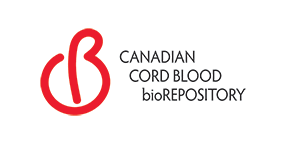Physician Resources
Introduction
Cord blood stem cell storage has become a high priority for many Canadian families. In order to make the best decision about cord blood banking, patients need to be aware of their options. Cord blood is currently collected in Canada for three main purposes:
- Transplantation into unrelated individuals (Public Cord Blood Banking)
- Storage for a child’s future use (Private Cord Blood Banking)
- Stem cell biology research (Cord Blood Donation for Research)
Many Canadians believe that these three options conflict with one another within the health system, however, we do not believe that to be the case. Families that qualify to donate cord blood for public banking must meet strict eligibility criteria. Some of these families are excluded due to genetic diseases in the family history that may never manifest during their child’s lifetime. This means that a substantial number of otherwise healthy individuals cannot donate cord blood to the public bank.
Many families would prefer to store their child’s cord blood privately with the hope of benefiting from ongoing stem-cell research. Some families do not feel that they have the financial resources to participate in private cord blood banking. There are other families that do not qualify for public banking but do not want to bank privately. These families are often pleased to learn that there are many stem-cell research programs in Canada, as it gives them the opportunity to contribute to their community despite being ineligible for public cord blood banking.




